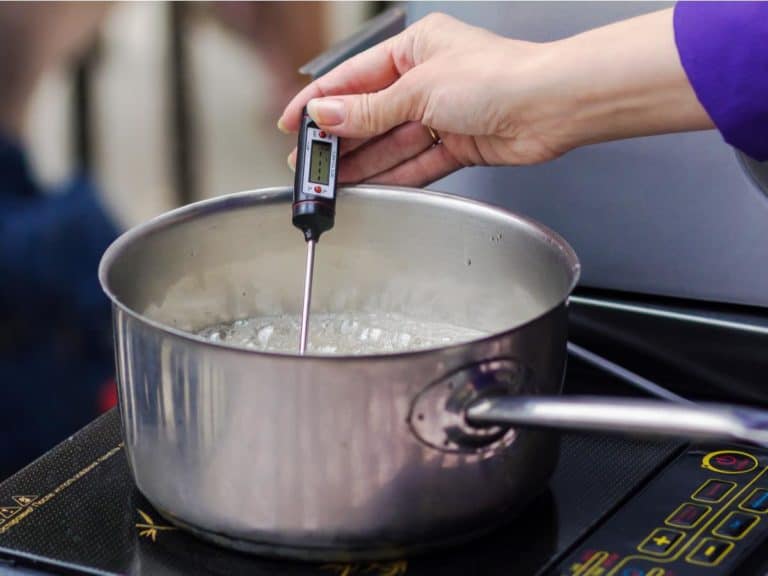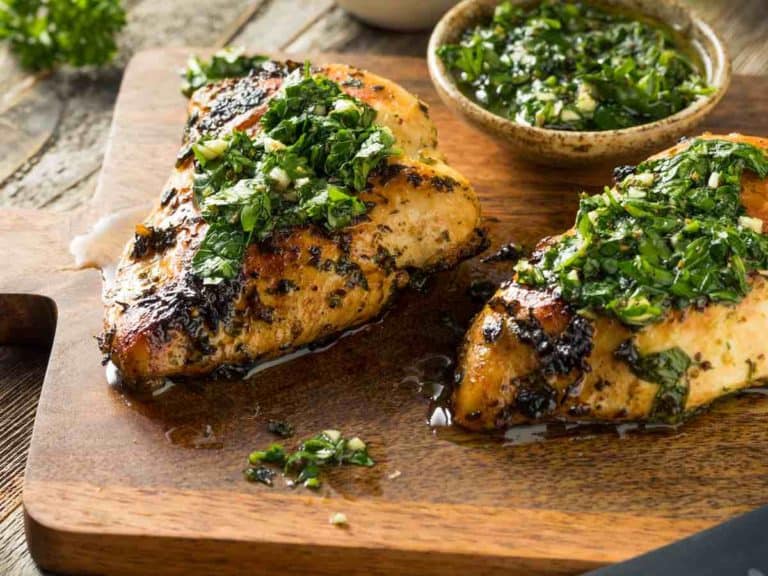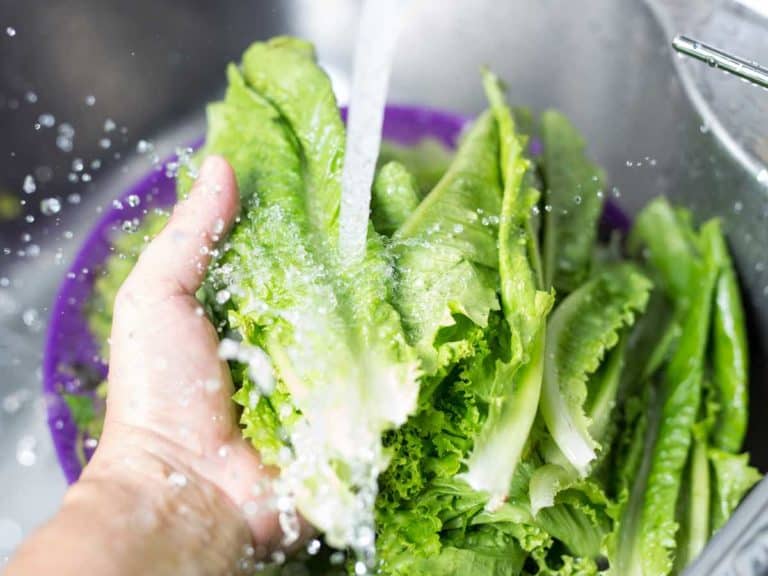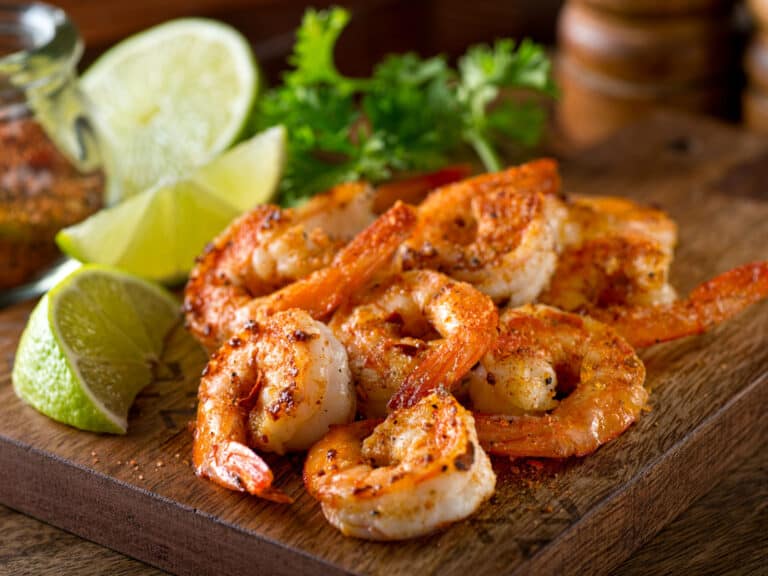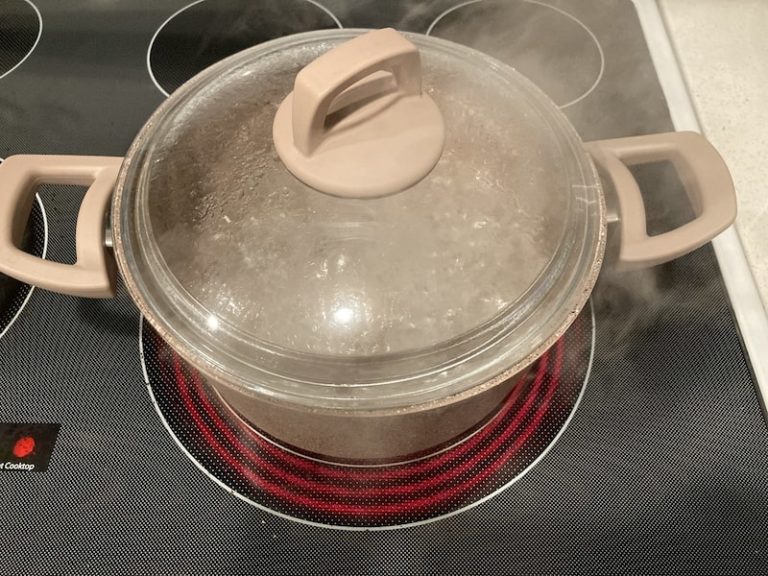When and How To Use Yeast And/Or Baking Powder
It’s the first time when my daughter is trying her hand in baking, and reading through the ingredients of a muffin recipe as well as sourdough. She learned about yeast and baking powder as part of the baking ingredients.
And while I was teaching her, I wanted to make a helpful resource for everyone who wants to use how and when to use baking powder and yeast.
Yeast and Baking Powder are leavening agents used in baking. Yeast is ideal for bread-making because it rises before baking. Baking powder is activated by heat and makes cakes, pies, muffins, cookies, and other deserts rise in the oven.
Baking is all about exact measurements, monitoring baking time, and correct temperatures.
Yeast and Baking soda both have their own set of handling rules to achieve the best results for your baked goods.
Once you have learned about each ingredient’s behavior and reaction, you will understand why some items need the ingredient yeast and others need baking powder.
Yeast vs Baking Powder: When to Use Which
| BAKED GOODS | YEAST | BAKING POWDER |
|---|---|---|
| Dinner Rolls | Y | N |
| Pizza Dough | Y | N |
| Cinnamon Rolls | Y | N |
| Loaf Bread | Y | N |
| Flat Bread | Y | N |
| Crackers | Y | N |
| Brioche | Y | N |
| Pizza Dough | Y | N |
| Foccacia | Y | N |
| Challah | Y | N |
| Pretzel | Y | N |
| Coffee Cake | Y | N |
| Danish | Y | N |
| King’s Cake | Y | N |
| Savarin | Y | N |
| Pancakes | N | Y |
| Cornbread | N | Y |
| Biscuits | N | Y |
| Cakes | N | Y |
| Cookies | N | Y |
| Muffins | N | Y |
| Quick Bread | N | Y |
When To Use Yeast
Yeast comes in two forms, instant dry yeast is mixed into the dry ingredients, while active dried yeast needs sugar and soaked in warm liquid for 5-10 minutes to hydrate.
The difference is in the measurement adjustment wherein you use four times the measurement of active yeast to one ratio of dried yeast.
Here are the cases when you should use yeast:
- Use yeast when you need to let something rest for a few hours.
- When your want an airy rise allowing the gluten to start working through the dough.
- When you’re making shaped doughs or thicker doughs.
- When you want a bread- taste.
Kinds of Yeast
- Active Dry Yeast
Active Dry Yeast activates by combining a warm liquid to hydrate and any sugars like honey, fruit juice, or table sugar to feed.
The dough excretes carbon dioxide and an alcohol byproduct that develops gluten and flavor when it rises. Gluten strengthens the elasticity of the bread, making it chewier and fluffier.
- Instant Yeast
Instant Yeast is a dry yeast that comes in smaller granules that absorbs liquid faster. It doesn’t need to rehydrate or be prepared before mixing into flour.
- Rapid-Rise Yeast
Rapid Rise Yeast or Bread Machine Yeast are instant yeasts that include a dough conditioner like ascorbic acid.
- Fresh Yeast
Fresh Yeast is a block of yeast cells that contains about 70% moisture, also called cake yeast or compressed yeast.
Baking professionals used this for baking. It is pale beige in color, soft and crumbly with a strong yeast smell. It is seasonal and has a short expiry of two-week shelf life that has to be refrigerated.
- Wild Yeast
Wild Yeast Or Starter Yeast are colonies of live yeast known as starters for making bread. You can make your homemade starter by using commercial yeast mixed with potato water to attract and feed wild yeasts in the air around. Wild yeast can be passed on from generation to generation but stored in an airtight container or one-quart crock jar.
Below is a recipe of DIY yeast.
Homemade or Starter Yeast Recipe
- Mix equal parts of ¼ cup flour and ¼ cup water in a small bowl.
- Cover the bowl loosely and leave it at a warm room temperature.
- Keep adding one tablespoon of flour and one tablespoon of water in the morning and evening for the next 3-5 days until the mixture bubbles.
When to Use Baking Powder
Baking Powder is a combination of sodium bicarbonate with two kinds of acids. The first acid is Monocalcium phosphate, and the second is either sodium acid pyrophosphate or sodium aluminum sulfate. Its leavening or rising process is a chemical reaction to liquid and temperature.
Baking powder’s ability to rise happens on two occasions.
At the start of baking, the combined ingredients form small gas cells during the first rise, and the second rise expands the cells to create a light texture.

The base of Baking Powder is baking soda, an alkaline substance that creates carbon dioxide. It doesn’t need a resting time to rise. Baking soda with a few ingredients and acid is baking powder.
Here are the instances when you should use baking powder:
- When you need the dough to rise without the waiting period
- When the recipe you are using does not have acid
Kinds of Baking Powder
- Single- Acting Baking Powder
Single-acting Baking Powder is one initial activation process when liquid adds to the mixture. The acid and base combine in the baking powder mixture.
- Double-Acting Baking Powder
Double-acting Baking Powder is carbon dioxide excreted at different stages in the baking process. At the start, when it encounters liquid and carbon dioxide is released and starts rising. The second phase is when you place the dough into the oven the activates the sodium acid pyrophosphate or sodium aluminum sulfate is wet and warmed up.
DIY Baking Powder
You can make your homemade version of baking powder to eliminate the metallic taste from the commercially-bought brands. It’s a simple combination of mixing one part baking soda, one part cornstarch, and two parts cream of tartar.
Homemade Baking Powder Recipe (Yields 1 Teaspoon)
- ¼ teaspoon of baking soda
- ¼ teaspoon of cornstarch
- ½ teaspoon of cream of tartar
Is Baking Powder and Yeast the same?
While both Baking Powder and Yeast are ingredients for baking, you cannot swap one for the other and vise versa. The two are both leavening agents but have different functions and have a distinct reaction to ingredients.
| YEAST | BAKING POWDER |
|---|---|
| It is a natural single-celled organism called saccharomyces cerevisiae. | Made of sodium bicarbonate which is a chemical compound |
| Yeast needs sugar and warm water. But if the water is too hot, the organism in yeast can die. | Baking powder is mixed with hot water with all the ingredients then ready to bake. |
| There is a resting or waiting time before yeast gets rehydrated and starts its rising action. | There is no resting or waiting time for baking powder to rise because it happens while baking. |
| The shelf life of yeast is six months in the refrigerator. | The shelf life of baking powder is six months in the pantry. |
| Yeast is flavorful for bread. | Baking powder has an unpleasant flavor. |
| Yeast has a different texture of crusty and airy holes caused by gluten. | Baking powder does not give any texture and only provides the rising element. |
| Yeast relies on a biological reaction when mixed with sugars and liquid. | The acid-base of baking Powder undergoes a chemical reaction with water and heat to produce gas |
| Yeast is supported by the protein-structure of gluten. | Baking powder is supported by a starch structure. |
| The optimal state of yeast is 78°-120°F to start its leavening action but dies at a high temperature of 120°-140°F. | Baking powder thrives on heat and will perform its leavening action from 120°-210°F which is the usual temperature for baking. |
How Much Yeast do I Use Instead of Baking Powder?
Substituting yeast for baked goods will require a trial-and-error experimenting process. However, in most cases, you can use a mix of lemon juice and baking powder to substitute yeast in one to one ratio.
If you want to use yeast, allow a few hours for the yeast to act up and strengthen its gluten strands.
Cakes have a high sugar ratio which is the food of yeast. Your cake will turn out more chewy with double the usual height.
The sweet yeast-risen cakes have a texture like a brioche or sweet roll instead of a sponge cake. You can add some fats like butter, margarine, or shortening to cut down gluten strands to allow a softer texture.
The Caveat to Interchanging Yeast and Baking Powder
Yeast and Baking Powder have different properties and reactions. Even if they are leavening agents, they function very differently.
But it’s not an impossible task if you will experiment with the rise timing, the flour and sugar proportions, and the difference in texture.
Since yeast requires a protein matrix from gluten that will hold the gas, it is impossible to get the finer, softer, and tender texture that baking powder can produce.
Yeast may devour the sugar and ferment dies in the oven at high temperatures if you do not allow it to rise before baking.
The cake batter is baked immediately after mixing and goes through the chemical leavening without any need for gluten presence. The result is a cake with a lighter and softer texture with flavors derived from extracts, rinds, fruits, and other sources.
Which is Healthier Yeast or Baking Powder?
Yeast is a healthier option since it contains protein, vitamin B, and folic acid. However, people on a diet should opt for a baking powder since it’s better for weight loss. Also, baking powder has fewer allergic reactions.
Overall, these two baking ingredients are harmless unless allergies are monitored and taken into account.
It is ingesting too much bread or desserts that make it harmful because of the potential threat of diabetes or heart conditions. Gaining too much weight directly affects the blood sugar, cholesterol, and blood pressure of a person.
Health Effects of Yeast
Yeast has health benefits because it is rich in protein, B-vitamins, folic acid, and fibers. It helps improve the immunity function of the body and balances the digestive system by absorbing minerals and vitamins.
When you take out bread from the oven, yeast is dead after baking at 190°-210°F and will stop feeding on the sugar present in the bread.
Too much yeast is not good if you are a victim of candidiasis, a fungal infection that will continue to exist with the presence of high sugar, low-fiber, and high-fat diets.
It is advisable to avoid leavened bread and best to buy unleavened bread until there is no more infection.
Allergens From Yeast
- Yeast Allergy will cause anaphylactic reaction and hives.
- Yeast Intolerance is limited to gastrointestinal symptoms.
- Fungi allergy from molds.
- Gluten Intolerance known as Celiac Disease or Celiac Sprue is an autoimmune disease that causes mood disorders, ear infections, concentration difficulty, etc.
Health Effects of Baking Powder
There is a residual effect after the chemical reaction of baking powder is absorbed by a person after eating it in the long term.
The salts such as sodium sulfate or aluminum hydroxide crystallize during the baking process. These naturally occurring salts accumulate in the body that may alter normal functions and may cause toxicity in the body.
When you eat baked goods for a long time, there is an increased risk of high blood pressure, heart failure, and stroke after prolonged intake.
Other effects are kidney stones, headaches, enlarged heart, and osteoporosis.
In this case, the best option is to take unleavened bread with a yeast ingredient to help digest the baked goods.
Allergens from Baking Powder
- Corn allergy if cornstarch is present in the baking powder.
Using Baking Powder and Baking Soda Together
Baking Soda needs acid to activate the rising agent that is carbon dioxide. When a recipe calls for baking soda and baking powder, it assigns the soda to neutralize some acid and tenderize the finished baked item. The baking powder does the work to make it rise.
Together it produces a salty-bitter taste and best to use sparingly. You will see baking soda and baking powder together in a recipe when there is plenty of acid like coffee, buttermilk, and chocolate.
Conclusion
Yeast and Baking Powder are both essential ingredients for baked goods. Each has its use and function depending on the texture that you want to achieve. Each has its finished product that we have grown used to.
It is better to use yeast for all kinds of bread, pizza doughs, and some yeast-cake recipes. In the same way, it is advisable to use baking powder for cakes and pastry recipes to get smooth and softer textures.
You can continue to enjoy baked goods and make homemade versions, but it is important to familiarize yourself with the uses of yeast and baking powder, so you are aware of its differences.

